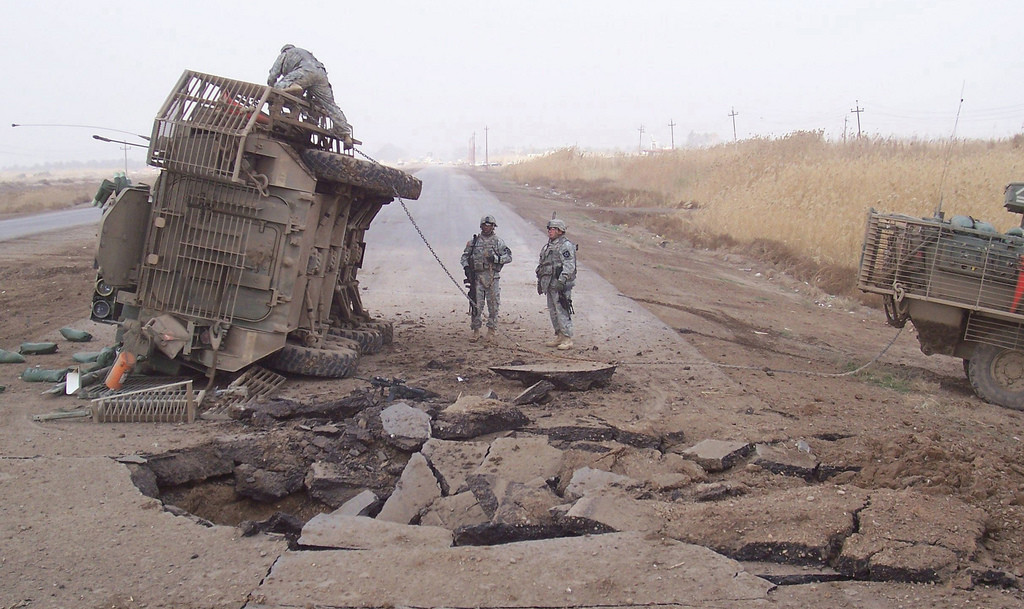Against a Tech-Centric Offset

Finding the right offset strategy may very well be the key to the United States maintaining its edge over current and future competitors, but are Washington strategists looking at the problem right? I worry that some are putting the technology cart before the strategy horse.
According to the press release, the new CNAS “Beyond Offset” project seeks “to examine how the U.S. military can maintain its technological advantage through a period of declining defense budgets.” The project presumes that technology is the core issue for maintaining American military superiority well into the 21st century.
This places a means (technological superiority) to achieve national security ends before the dealing with of the strategic ends themselves. It assumes that technological superiority is necessary and perhaps sufficient regardless of the specific strategies in place. The endeavor also assumes that the rest of the world will cooperate in complying with the strategic, operational and tactical dictates such technological superiority requires. Given that our last two wars were fought against low-tech opponents, this assumption merits serious reconsideration. The current CNAS project makes it appear as if the U.S. national security community could wave a magic wand over the future security environment, with all its various stakeholders, and wish away any potential and possible actions that unfriendly stakeholders (potential foes) could invent.
Let us suppose that one potential foe decides not to cooperate with this tech-centric view. This actor could begin with the 2012 U.S. Defense Strategic Guidance that states that, “U.S. forces will no longer be sized to conduct large-scale, prolonged stability operations.” The opponent might take a page out of the then North Vietnamese efforts in the Second Indochinese War (1962-1975), which drew in massive U.S. forces, holding a tremendous technological advantage, into a protracted campaign.
Let us further suppose that the opponent wishes to negate America’s technology advantage rather than match it. He might take the approach that Lt. Gen. Paul Van Riper took during the Millennium Challenge exercise/experiment back in 2002. Some readers may recall that Millennium Challenge was supposed to be a test or proof of concept for Network Centric Warfare. General Van Riper headed up the Red team for the event. His direction to his forces was simple: don’t use the electromagnetic spectrum; rely instead on pre-arranged actions and decentralized command. The exercise/experiment had to be halted mid-stream because the Red forces were able to effectively cripple the U.S. forces, preventing them from achieving their ends. (General Van Riper quit his role as Red team leader during Millenium Challenge in large part due to restrictions placed on the Red team after the initial Red team success.)
A foe might also take the approach of Osama bin Laden’s 9/11 force. Using simple weapons systems such as knives and box cutters, this small and dedicated group of trained individuals wreaked havoc against the strongest nation on earth. They caused the U.S. to turn its strategic, operational, and tactical attention from what it wanted to do (engage Asia), to massively expending (perhaps even exhausting), its resources on defeating a rather small-scale threat.
Note that in all possible cases, the most advanced technology superiority would not and did not have an effect on the aims of the “other guy.” One might reasonably wonder if the Islamic State in Iraq and the Levant is now conducting a similar campaign against the technologically superior U.S.-led coalition.
Some readers of this outlet no doubt recall the words of the late Col. John Boyd who wrote and spoke that “wars are fought by people, not machines. And people use their minds!” Before we engage in the discussion of how to maintain U.S. technological superiority, those of us in the national security community should figure out just what that superior capability should be used for (ends) and how we should go about ensuring that those ends can be implemented. We should ensure that technology does not become the end in and of itself.
What might such ends-means relationships look like? One could turn to current commentators on U.S. national security strategy. For example, Richard Betts, Barry Posen, and Hal Brands advise us to seriously consider a national security grand strategy (or policy) of – in Posen’s words – “restraint.” Restraint means the United States should be cautious in committing its increasingly scarce national security resources in a globally connected but unstable world. However, if the United States does decide to commit these resources, Betts advises it should do so decisively for the long run. That would require a change of National Security Strategy different from the Defense Strategic Guidance direction. If there is one lesson learned from our recent experiences in Iraq and Afghanistan, it is that such interventions are manpower-intensive. They also require an appropriately trained force, and prolonged engagement of that force if it is to have a reasonable chance of achieving its objectives. The downstream effect of such a change in priorities would require the maintenance of sufficient manpower trained and educated for such hybrid warfare or stability operations. Given expected resource constraints, maintenance of this force would almost certainly face a zero-sum game with investment in maintenance of technological superiority.
There are other possible strategic ends-means relationships. Common to all of them is the necessity to explicitly recognize the strategic assumptions that they entail. Since it infers a strategic ends-means relationship, the CNAS Beyond Offset project needs to state all its strategic assumptions before prioritizing technologies that could maintain U.S. technological superiority. As any good operational (or strategic) planner should know, the fastest way to kill your troops is by ignoring the implied assumptions associated with an assigned mission.
Dr. Jonathan Czarnecki is a professor of Joint Maritime Operations for the Naval War College (Monterey). He is a retired Army officer with significant planning experience. He has taught planning and consulted with both public and private organizations on planning for more than 35 years.
Photo credit: The U.S. Army
